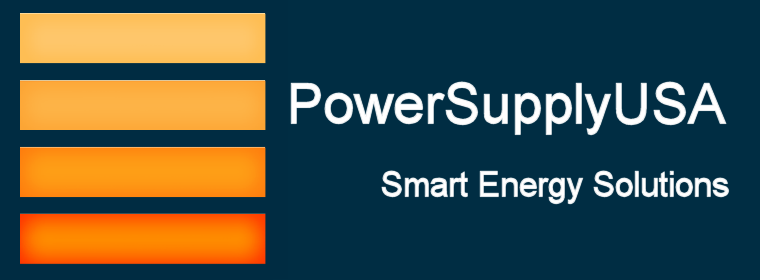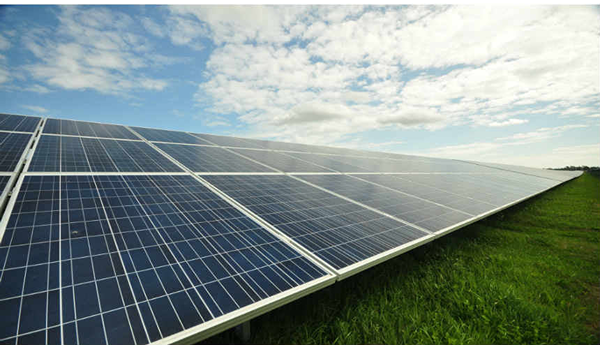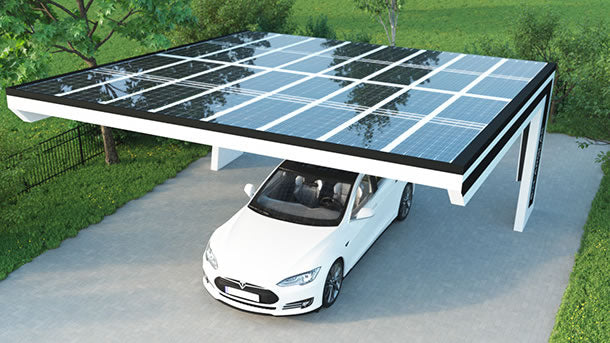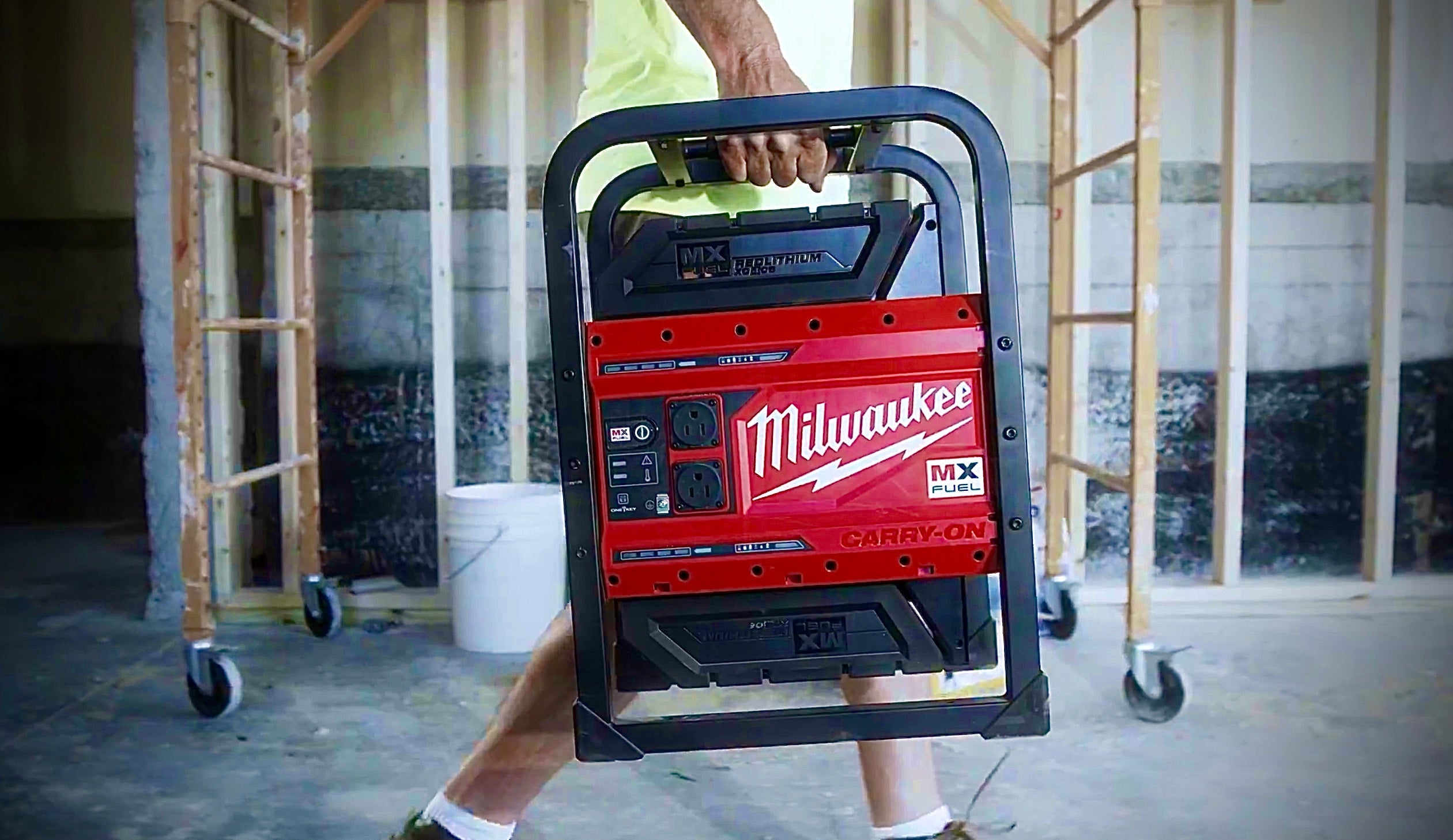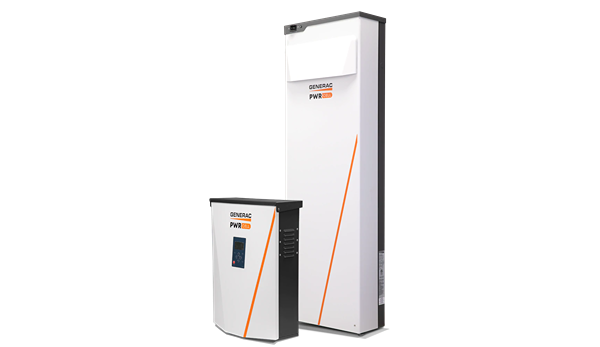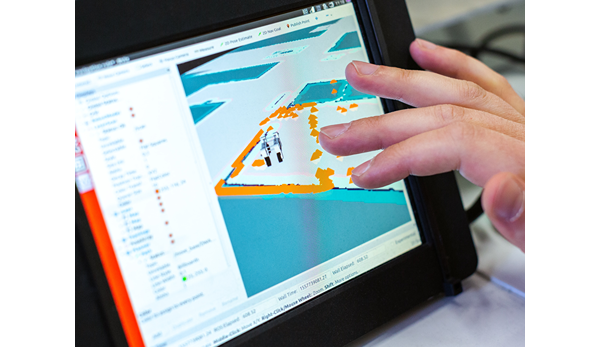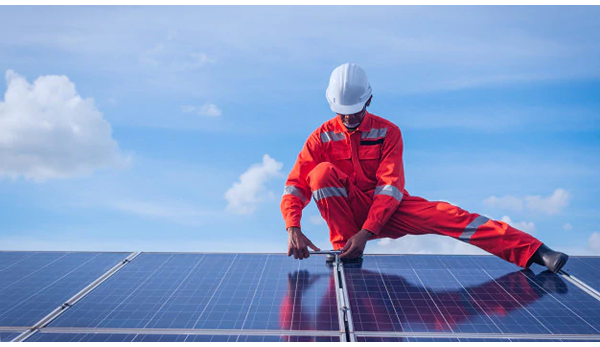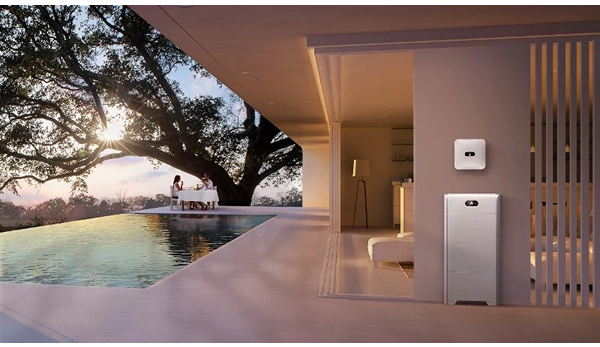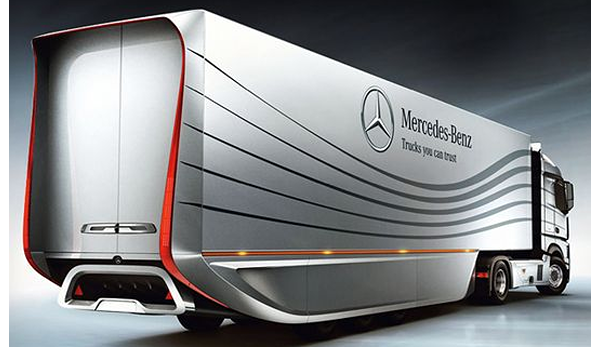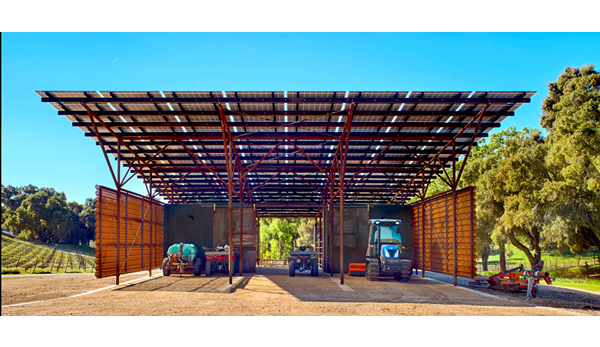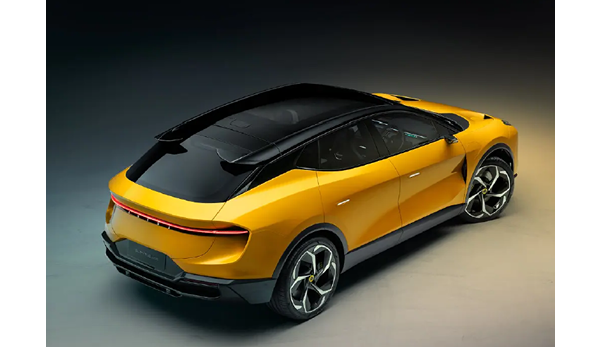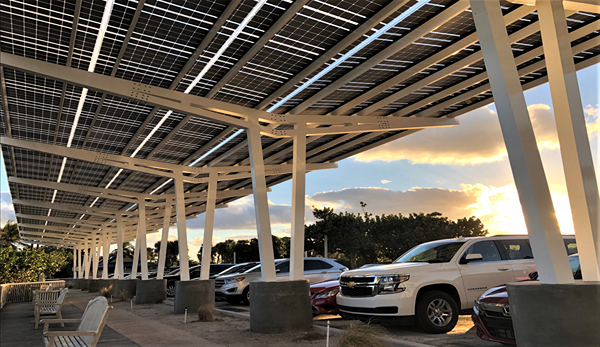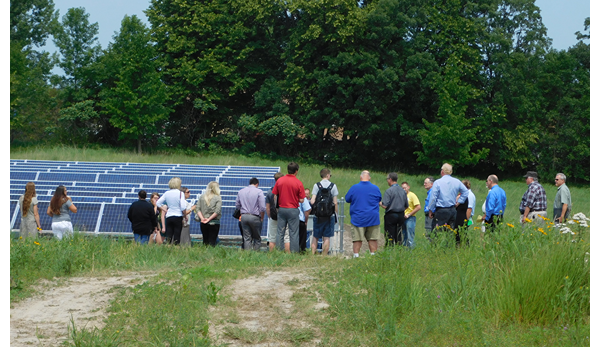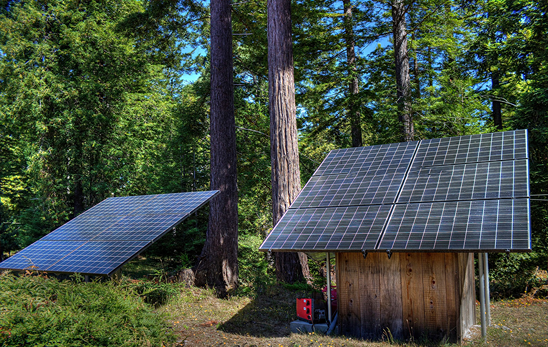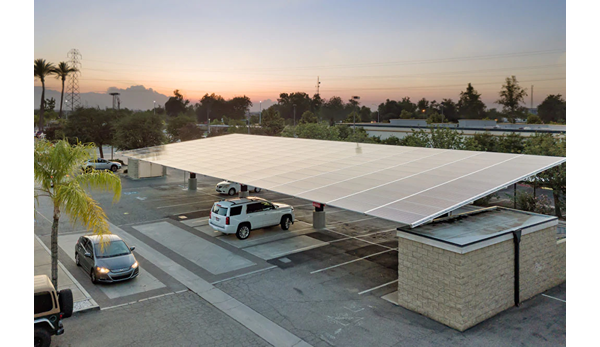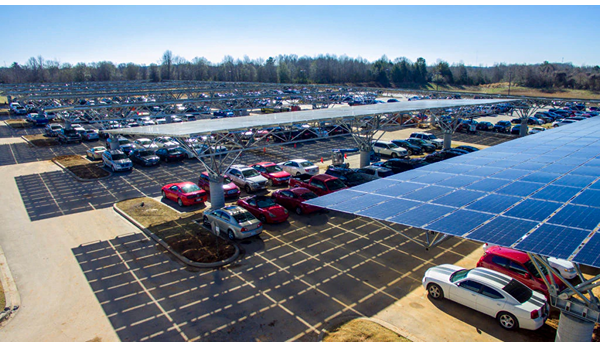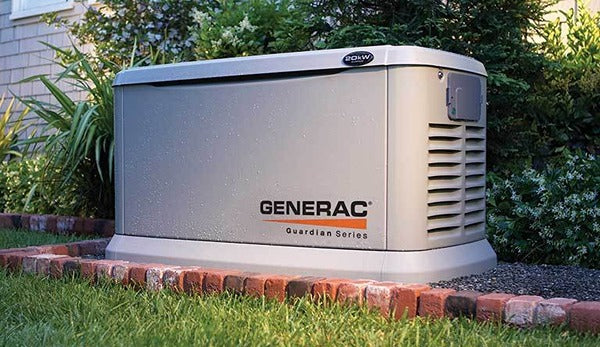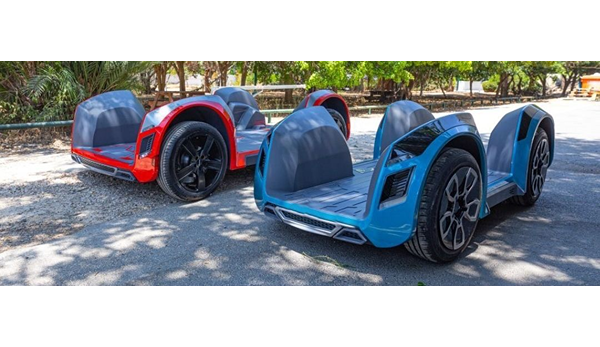
Solar Panels with Battery Backup
Solar Panels with Battery Backup
Looking for a way to keep the lights on when the power goes out? With increasingly intense weather knocking the power grid offline for days at a time, traditional fossil-fuel–based backup systems — namely portable or permanent generators — seem increasingly unreliable. That’s why residential solar power combined with battery storage is rapidly becoming a mainstream choice.
Multi-kilowatt batteries that charge from rooftop solar panels provide resilience in the event of an outage — a reliable, rechargeable, instantaneous source of electricity to keep important devices and appliances running until the grid comes back online.
- What is a solar power system?
- Grid Tied, or Off the Grid?
- Who should get this?
- What does solar with battery backup mean, exactly?
- What will this cost—and do you really need it?
- How long can you run your home on solar battery backup?
What is a solar power system ?
A solar power system is a self-contained source of clean, electric energy.
Main components of a solar power system.
- Photovoltaic cells: They are able to capture direct sunlight as “photons”. They are composed of sandwiched layers of semi-conductor particles, like phosphorous and boron. When a sunlight particle hits a photovoltaic cell through a photon, it triggers the “electrons” contained within the semiconductor layers. This friction between the photons and electrons of a photovoltaic cell, produces electric energy, measured in “watts” of power.
-
Solar panels: A cohesive cluster of photovoltaic cells that form a solar panel. The size of the panel is determined by the number of photovoltaic cells in contains. This, in turn, determines the total power generated by the solar panel. A solar panel typically produces 200 to 400 watts of power. A 1,000 square ft home may need 25 solar panels of 400W each, to produce 10 Kilowatts of solar-powered energy.
-
Inverter: The electric energy produced by a solar power system is in the form of direct current (DC) that is more suitable to portable power banks and UPS. However, common electrical appliances like lighting and heating equipment, kitchen, and electronic equipment, etc. run on alternating current (AC). An inverter converts the DC produced by a solar power system into usable AC.
-
Battery: A solar power system can only generate solar energy with the availability of direct sunlight. This is great for powering appliances during the day, but not at night.
A solar battery will store the harnessed solar power for use later (typically during the night).
- Racking and mounting systems for solar panels: Solar panels installed on the roof of a building, or directly on the ground stay in position due to racking and mounting systems. These prevent the panels from blowing away or loosening despite harsh weather conditions.
-
Solar charge controller: Once a solar battery is fully charged, a device is needed to stop the panels from continuing to send energy to the battery. This mechanism is a solar charge controller, and it is responsible for protecting the battery from over-charging or getting “drained” when not in use.
Grid Tied, or Off the Grid?
-
Grid-tied Systems: For areas with adequate grid connectivity, homeowners commonly stay connected to the grid. Their solar power system is primarily a supplemental source of energy.
This configuration allows for a small number of solar panels to be used, and eliminates solar battery storage, thus reducing costs. When the sun is shining, they use solar-powered energy and at night, conventional electricity offered by utility companies.
-
Off-grid Solar Power System: These systems do not connect to any other source of conventional electricity (like utility companies).
Off-grid solar power systems are more expensive, as they rely on solar panels and solar batteries with high wattage capacity to generate and store adequate energy for all of a user’s needs (day + night). They are more suitable for rural areas with poor grid connectivity, or in areas that experience frequent power shutdowns.
- Net-metered solar power systems: To optimize the use of a solar power system, include a net-metering system that is tied to the grid, along with a sufficiently large solar battery for night time use. These systems include:
- Solar panels to harvest solar power during the day.
- Solar inverters and controllers to regulate the generated power.
- Solar batteries to store the energy produced for night-time use.
- Net meter.
A net meter is a type of solar energy meter that allows you to measure the amount of energy sent back to the grid. An optimized net-metered system is configured as follows:
- Produce large amounts of solar power during the day.
- Fill the solar battery to maximum capacity during the day, for night-time usage.
- Return excess solar energy back to the grid, for credit from the local utility.
- Tap into grid-based conventional energy when direct sunlight is not available (at night, or during winter), or during off-peak hours when conventional electricity rates are low.
Such systems have variables that cannot be well automated. For this reason, property owners make use of solar monitors, solar inverters and solar power optimizers. These modules allow you tap into solar energy when it is produced in plenty, store it for use during peak hours, and then sell any excess energy to utility companies for profit.
Who should get this ?
Backup power in an outage is crucial for anyone looking to maintain basic comfort and communication abilities. Scale it up to a larger system, and you can go beyond the basics, backing up more appliances and tools for more time until the grid power returns.
Every state and utility has its own incentive programs, rebates, and tax credits — all factors to consider into your purchase decisions.
The federal Inflation Reduction Act of 2022 also contains incentives that may affect your decision to add battery backup to an existing solar system: Through 2032, you’ll be able to claim 30% of the project cost as a tax credit when you file with the IRS.
What does Solar with battery backup mean, exactly?
Solar panels with backup battery storage are nothing new: People have been using banks of lead-acid batteries to store solar power for decades. But those systems are bulky, require regular maintenance, rely on toxic and corrosive materials, and often must be housed in a separate, weatherproof structure. Generally, they’re limited to rural, off-grid applications.
Modern, compact, high-capacity lithium-ion batteries, that first appeared in the 2010s are the primary components for a grid-tied solar system in which solar panels supply power to both you and the grid.
The first such system was Tesla’s Powerwall, announced in 2015. As of 2022 at least 26 companies offer lithium-ion storage systems in the US, including seven manufacturers who account for most installations - Enphase, Tesla, LG, Panasonic, SunPower, NeoVolta, and Generac.
The difference between these batteries comes down to chemistry, the type of input power, the storage capacity, and the load capacity.
All of the batteries work the same way: They store power from rooftop solar panels as chemical energy during the day, and then release it as needed at night, when the solar panels are idle, as well as during power outages, to keep your appliances and devices running. All batteries charge only via DC (direct current) power, the same sort of power that solar panels produce.
The amount of power that a battery can store, measured in kilowatt-hours, is a key factor. If you rarely experience long blackouts, a smaller and less expensive battery may suit your needs. If your area’s blackouts last a long time, a larger battery may be required. And if you have critical equipment in your home that absolutely cannot be allowed to lose power, your needs may be higher yet.
You have to consider a few other things, as well.
DC-coupled batteries.
The majority of new installations use DC-coupled batteries. That means the DC electricity produced by your panels feeds directly into your appliances and charges the battery. The current goes through an inverter, which converts the DC (direct current) electricity to AC (alternating current) electricity—the type of power that homes use.
This configuration offers the most efficient way to charge batteries, but it involves running high-voltage DC into your home, which requires specialized electrical work.
AC-coupled batteries
As an alternative, you can opt for AC-coupled batteries, and install a solar array that uses micro-inverters behind each panel to convert their output into AC right on your roof (which means no high-voltage current enters your home). To charge a battery, integrated micro-inverters in the battery itself then reconvert the electricity to DC, which gets converted back to AC when the battery is sending power to your home. AC-coupled batteries are less efficient than DC-coupled batteries, because with every conversion some electrical energy is lost as heat.
Hybrid inverters
Hybrid inverters offer two key abilities. They take input as either AC or DC, and then use software to figure out where it’s needed and make any necessary conversions. Some hybrid inverters (Sol-Ark) are of particular value since they can work with batteries of different brands.
Hybrid inverters can also generate their own grid signal which allows the solar array to sense that the grid is online. If an array loses that signal—which means that there’s a grid outage— the system can stop working until the power returns; that means you will be without power.
However by generating a grid signal, hybrid inverters let your solar system keep running during an outage, powering your home and charging the battery by day and using the battery to power your home at night.
Storage capacity
In addition to storage capacity, measured in kilowatt-hours, batteries have load capacities, measured in kilowatts. Continuous capacity refers to how much power the battery can put out under normal operating conditions. It also indicates a limit on how many circuits you can run at the same time. Peak capacity refers to how much power the battery can put out for a few seconds when an appliance, such as an air conditioner, kicks on and creates a sudden, brief need for power; such an event requires a robust peak capacity.
There are two main types of Lithium-ion battery chemistry used for solar. The more common ones are NMC, or nickel-magnesium-cobalt, batteries. Less common (and a more recent development) are LFP, or lithium-iron-phosphate, batteries.
NMC batteries are more power-dense. They are physically smaller for a given storage capacity. But they are more sensitive to heat generated during charging and discharging and are more susceptible to thermal runaway fire propagation. They also have lower lifetime charge-discharge cycles.
LFP batteries, are less energy-dense. They are physically larger for a given storage capacity, but they are less sensitive to heat generation and have higher charge-discharge cycles.
Homeowners need to figure out which devices and appliances they want to keep up and running during an outage and build a system to support those activities.
What will it cost—and do you really need it?
Installing battery storage is expensive. In 2021, the median cost per kilowatt-hour of battery storage was almost $1,300. Charges of $6,000 to $12,000 for a 9.6 kWh system are not unusual for batteries from major suppliers ( Enphase, Tesla, LG, Panasonic, SunPower, NeoVolta, or Generac).
Do you need to spend a lot of money to meet your needs during a power outage? Less-expensive options than high-kilowatt solar storage exist, including portable gasoline generators, lithium-ion portable power stations, and small solar battery chargers aimed at keeping devices running.
Portable power stations are safe to use indoors, but they aren’t as convenient as plugging things into a wall outlet. There are ways to get household circuits working during an outage without a traditional rooftop-solar system. Goal Zero sells solar generators for campers, RVers, and also for homeowners by using a home integration kit.
In a blackout, you manually disconnect your home from the grid (a physical transfer switch is included ). You then run your home’s circuits on an external Goal Zero battery and recharge it with Goal Zero’s portable solar panels. The manual disconnection switch is an extra step versus an automatic transfer switch used in grid-tied solar systems. The price starts around $4,000 installed, for a 3-kilowatt-hour battery.
A solar device charger will allow you to keep in touch with loved ones and give you access to news alerts in an emergency, but it won’t keep the fridge running. Fossil fuels can run out, leaving you stranded, and of course a fossil-fuel generator is not environmentally friendly.
If your goal is maximum resilience after a disaster, you really should have a gas generator—a backup for the backup. Several battery makers have incorporated the ability to use fossil-fuel generators to charge their batteries in the event of an extended blackout.
How long can you run your home on solar battery backup?
In 2020, according to US Energy Information Administration figures, the typical US home consumed 29.3 kilowatt-hours per day. A typical solar backup battery can store somewhere around 10 kilowatt-hours. Solar batteries are generally stackable, which means you can string multiple batteries together to increase your storage.
But how long you can run your home directly from battery storage?
That is the wrong way to think about solar storage in the context of a blackout. Expect your solar array to deliver power to your home and recharge your battery during the day—in sunny weather— continuously regenerating your backup power source. That adds a form of resilience that fossil-fuel generators lack, because once their gas or propane runs out, they’re useless until you can get more fuel. And that may be impossible in an emergency.
To make your battery last as long as possible, you need to cut back on your usage. Assuming you want to keep the fridge running, keep a couple of devices charged for communication and information, and keep some lights on for nighttime safety, how long could you expect a battery to last without recharging?
Goal Zero has run multiple tests using a 3 kWh battery. They can go for a day and a half with a fridge running, multiple phone recharges, and bedroom and bathroom lighting. They have also done tests with their solar panels hooked to the battery. If it’s the “end of the world” we can get an indefinite run time on limited circuits. Our batteries can be back to a hundred percent every day by 6:00 p.m. A 10 kWh battery can run a fridge, some lights, and several device chargers for two to three days. You can also manually shut off individual breakers in your panel to limit the battery to feeding only those you consider critical.
All solar storage batteries come with apps that show you which circuits are being used, helping you find and eliminate power draws that you may have overlooked. Some battery makers are offering smart panels that can toggle individual circuits on and off remotely and thus customize which circuits are in use at various times (say, disabling the bedroom lights and outlets during the day and turning them back on at night). And the battery’s software will also take steps to optimize your power usage, closing down circuits that aren’t needed.


